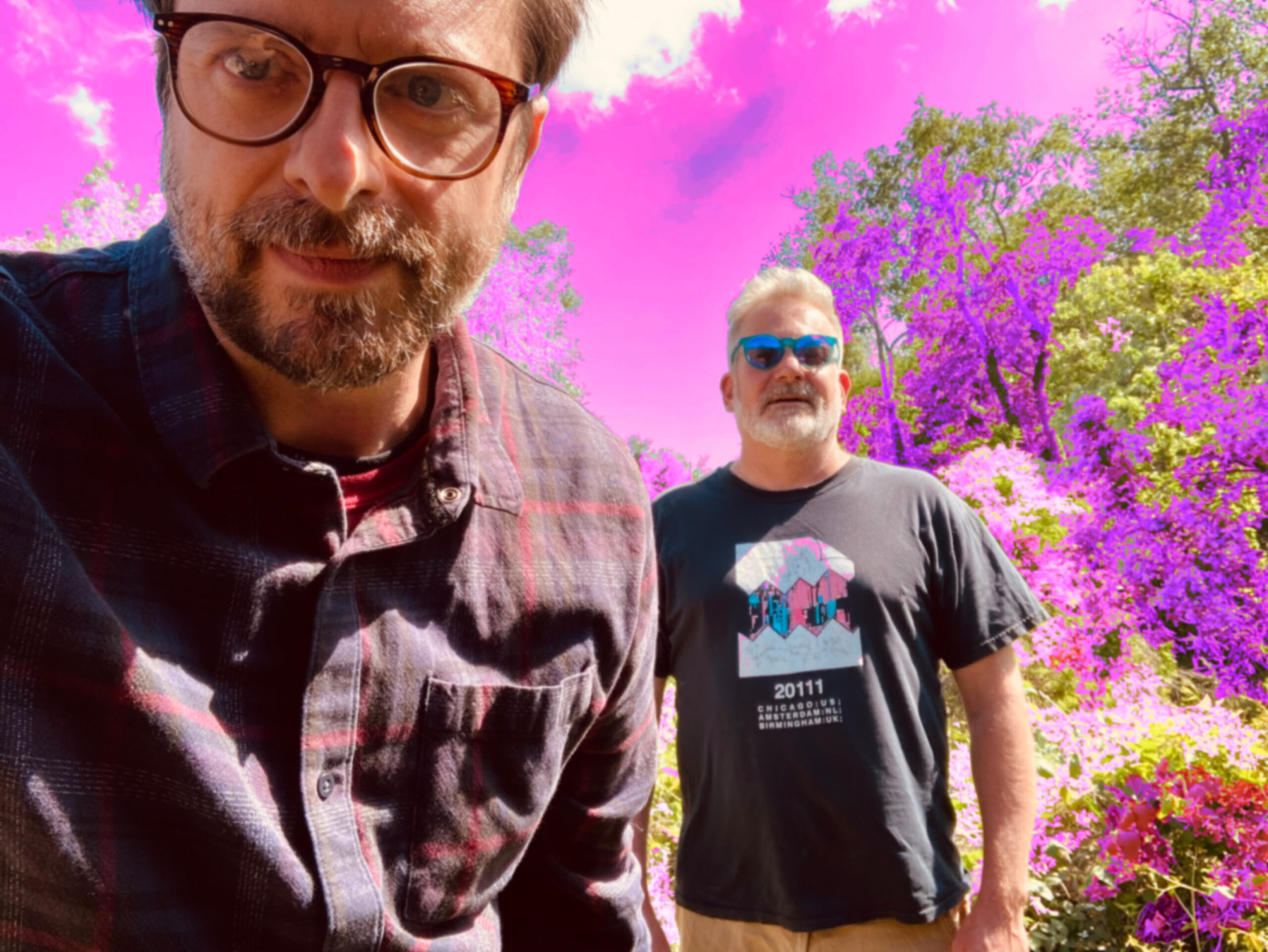Jeff Arnal and Curt Cloninger | Interview | New Album, ‘Drum Major Instinct’
Drum Major Instinct is an experimental music duo from Asheville, North Carolina. Jeff Arnal plays (mostly) percussion and Curt Cloninger plays (mostly) modular synthesizer.
Jeff Arnal studied with noted American composer Stuart Saunders Smith and visionary artist Milford Graves receiving an MFA in music from Bennington College. His music can be heard on a number of independent labels. Arnal has performed and collaborated with a wide range of musicians throughout the U.S. and Europe. In 2002, he co-founded Improvised and Otherwise, a multidisciplinary festival in Brooklyn, NY. From 2012-16 Arnal was a Senior Performance Specialist at the Pew Center for Arts & Heritage in Philadelphia, PA. Currently he is the director of Black Mountain College Museum + Arts Center in Asheville, NC.
Curt Cloninger is an artist, musician, writer, and Associate Professor of New Media at the University of North Carolina, Asheville. His art uses an array of media combinations to undermine language as a system of meaning in order to reveal it as an embodied force in the world. His art work has been featured in the New York Times and at festivals and galleries from Korea to Brazil. Exhibition and performance venues include Centre Georges Pompidou (Paris), Whitney Museum of American Art (New York), Granoff Center for The Creative Arts (Brown University), Ukrainian Institute of Modern Art (Chicago), Black Mountain College Museum + Arts Center (Asheville), and the internet. Curt has been published on a range of topics, including new media and internet art, installation and performance art, experimental graphic design, popular music, and network culture. His fifth and most recent book is entitled, “Some Ways of Making Nothing: Apophatic Apparatuses in Contemporary Art” (Punctum Books, 2021).
Tell us about your background, how did you first get interested in music?
Curt Cloninger: Both my parents loved music. My mom was a professional lyricist. She co-wrote several #1 gospel songs, and a #2 country music song. She was raised in musical theater, so we sang a lot of show tunes in the car. My dad liked Paul Simon, James Taylor, and Crosby, Stills & Nash. I got into Yes by chance pretty early on, then later got into punk rock. My first band (age 13) basically covered the entire REM ‘Murmur’ album, plus U2 songs and several other US southern college radio bands. My next band (age 15) played Sonic Youth, Pere Ubu, Minutemen, and punk originals. Then my college band played original speed metal songs, Black Sabbath, and death metal versions of Prince, Led Zeppelin, and Spinal Tap. Only later did I really get into late-era John Coltrane or anything jazz (unless Minutemen are jazz).
Jeff Arnal: I was the odd duckling growing up in a non-musical/non-art family. Several generations ago we had some artists and orchestra musicians in my family but I guess it skipped a few years until I felt some sparks. My wife, Estelle is a dancer and choreographer and we have two teenagers who are musical so our house is alive with creativity.
I grew up in Georgia surrounded by creeks, ponds, fields, endless woods and lots of wild animals so I would say that my earliest musical memories and artistic curiosity evolved out of experiences with the natural world. The other defining moment in my youth was getting turned on to the independent music that was happening in Georgia and around the US in the 1980s – listening to punk, post punk and independent music on the radio, records, tapes or sometimes in concert is key to understanding my creative bug. Many groups like REM from Athens, GA, were inspiring. I was lucky enough to see the Minutemen open for REM in 1985. REM was phenomenal but the Minutemen became a lifelong True North. I was already playing the drums in 1985 with some childhood friends. We played mostly cover songs but I also played some guitar and started writing songs for our band. My older brother and sister were in college so at some point. I was feeling pressure to figure out my future. As a teenager I didn’t know you could study art and music in college so once I found that out I set my sights on going to a music school.
You’re both coming from Universities. Jeff, you studied with composer Stuart Saunders Smith and Milford Graves. What was it like for you two learn from two rather exceptional artists?
Jeff Arnal: I was on an accelerated musical path in the late 1980s – devouring all types of music. By the early 1990s I was studying at the Peabody conservatory and playing in several school orchestras, a gamelan orchestra and percussion ensemble. I was also taking music theory, orchestration and musical analysis classes. I continued to compose music on the side but didn’t connect with any of the composition teachers at Peabody. I started to visit with Stuart Saunders Smith at the University Maryland Baltimore County. Stuart changed the fundamental way that I approached music. He opened my ears and eyes. I still have the notes from my very first composition lesson and all of it is still important to me today. Some of the notes included references to the music of John Cage, Iannis Xenakis, and Brian Ferneyhough. Smith is completely unique – he forged his own path as an artist. He is so intelligent and articulate about his work, music theory and composition that he offers endless enthusiasm, advice and lots of new musical references. It didn’t take long to transfer all of my energy to working with Smith.
In our lessons he would help me work through composition questions in my scores and then as a percussionist I would work on his pieces. We had a new music ensemble at UMBC that would play student compositions, Smith scores or other new music scores. I ended up meeting some of my best friends and lifelong collaborators through that work – both John Dierker and Jonathan Vincent also studied with Smith.
I’ve been extremely lucky with mentors. Smith and Graves both supported and encouraged my work. Not only did they offer serious and fundamental nuts and bolts for my drumming but they offered a larger view of the history of the so called avant-garde and different experimental music scenes. In many ways they offered lessons on how to become a dedicated and uncompromising artist.
Graves is now widely acknowledged as a giant in the history of free music and jazz drumming but in the 1990s he was less known. In 1996, I drove up from Baltimore to NY to see Graves perform at the Vision Festival and he blew my mind! Milford was on fire! There were so many great drummers on the bill – Denis Charles and Rashied Ali! After several meetings, Graves encouraged me to enroll in the graduate program at Bennington College.
Bennington was completely non-traditional – more of a musical apprenticeship. Most of our work was one on one – Milford would demonstrate concepts on the drum set or I would play the drum set and he would accompany with hand drums.
I remember in some of my early lessons we discussed how he was preparing musical concepts and instrumentation for his first solo recordings on John Zorn’s Tzadik label. Another lesson was the breakdown of the sessions for the great duo record with David Murray. Graves would also organize groups at Bennington that included many of my musical heroes. I had the opportunity to get to know and rehearse with William Parker, Matthew Shipp, Roswell Rudd, Raphe Malik, and the great Charles Gayle. Graves asked Gayle to teach at Bennington during that same period so Charles and I would meet every Thursday in the Carriage Barn to work on new duo music. We would eventually play a series of duo concerts at Tonic in the early 2000s.
I’m sure it’s impossible to put on paper, but what are some of the key lessons you got from Stuart Saunders Smith and Milford Graves?
Jeff Arnal: One of the key lessons from both Graves and Smith was how to stay true to your own path and ideas. Both Graves and Smith are intensely idiosyncratic and they both have a body of work that transcends style and traditions. They are both mavericks, sound explorers and musical inventors. I am still working on/towards all of these concepts and ideas.
Smith really gave me the skills and an understanding of how to create compositional systems and structures. With his guidance I was able to dive into some of the most complex new music. This music didn’t come naturally to me so it took endless hours of dedicated practice. Many of Smith’s pieces are written for percussion including his entire ’Links’ series for the vibraphone. I did my best to work through his percussion scores and I started to understand time differently – the subtleties of tempo, rhythm, and multiple tuplets against each other opened a new universe. Much of this period was training and retraining, experimenting and internalizing new rhythms and new musical ideas.
Smith definitely opened my ears and set the stage for my graduate work with Milford Graves. From the moment I heard Milford Graves I went absolutely bonkers over his music and his work with Chinese medicine and martial arts. I was completely dedicated to learning as much as possible from Graves with the hope of developing a deeper understanding of the body, musical resonance, physiology and philosophy. This work all led to a more holistic grounded approach that has a much more personal feeling. Timbre, resonance, attack, decay have always played a big part in my approach but Milford encouraged me to go deeper. Milford’s drumming is completely brilliant and he was an unmatched force - I found myself so immersed that I began to emulate his approach. This is one of the pitfalls of having a great mentor – your own artistic practice can become an extension of their work. I have found that the time that I dedicated towards studying with a particular artist or style I have spent an equal amount of time to find my way back to my own way. Not necessary to undo the work but to remember my musical memory and my own voice.
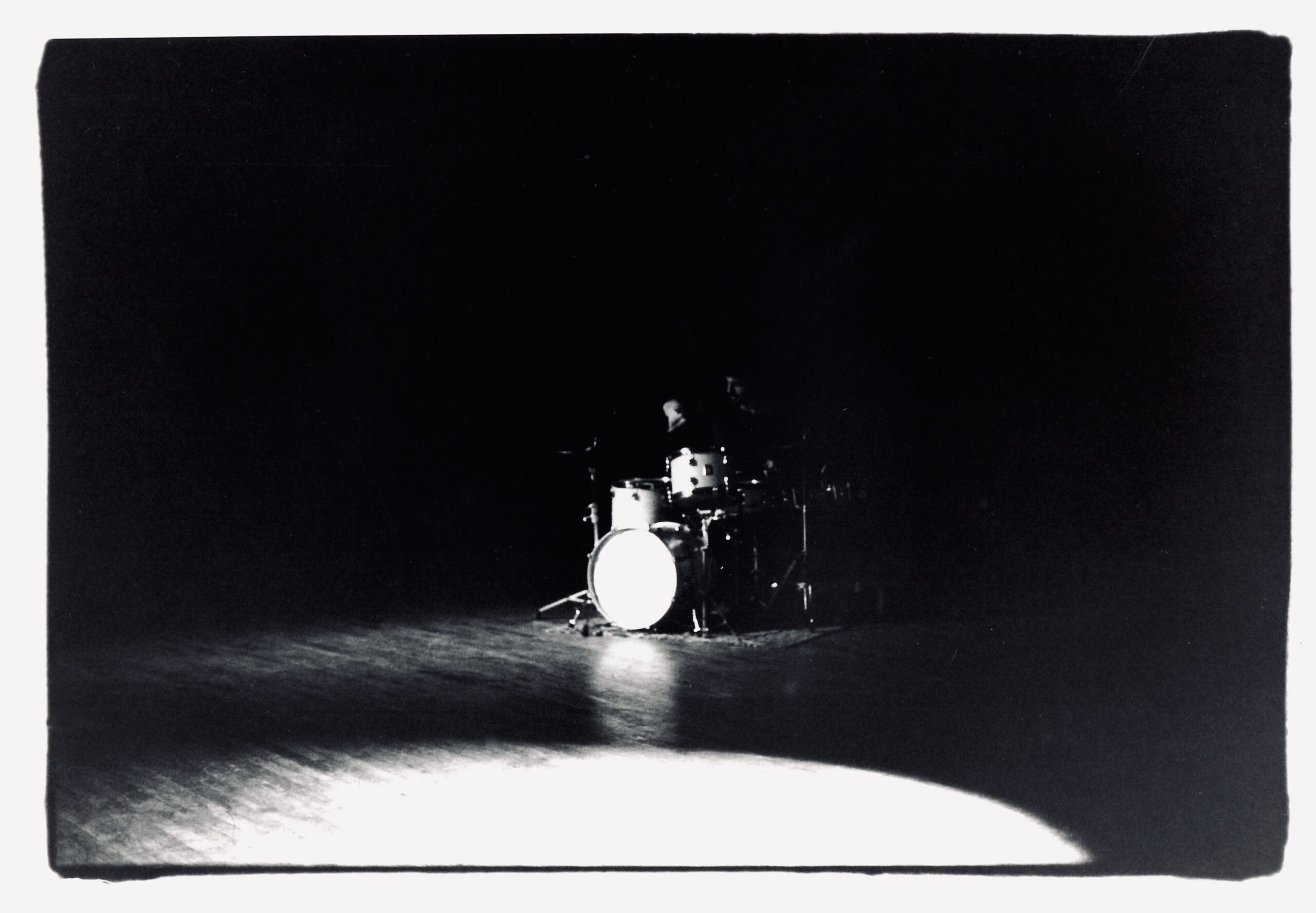
Curt, you’re a professor on New Media at the University of North Carolina Asheville, would you like to tell us more about yourself?
Curt Cloninger: Stereolab is my favorite band. Alfred North Whitehead is my favorite philosopher. My wife and I have five children. I play drums every week at my church.
“In my art, I use language in ways that trick it into revealing all the hidden things”
Curt, what’s the concept behind using art as an array of media combinations to undermine language as a system of meaning in order to reveal it as an embodied force in the world?
Curt Cloninger: Language lies about itself. It pretends that all it’s doing is objectively “meaning” things, but really it’s doing lots of other things. Spoken language is as much about context, body posture, vocal inflection, gesture, tone, and hundreds of other lived, affective qualities that don’t reduce to merely denotative syntax. Even written language is doing more than merely objectively “meaning.” There is the context in which something is read, the typeface, media (print, kindle, iPad, browser), the light in the room falling on the page (or screen), how caffeinated or drunk you are while reading, et cetera. I love language, I just don’t think I’m obliged to use it in the way it wants to be used. So, in my art, I use language in ways that trick it into revealing all the hidden things it is doing (besides merely “meaning”).
Jeff, this might be quite an effort, but before we discuss your latest project with Curt, would you like to take a moment and share a sentence or two about your past collaboration (album-per-album)?
Jeff Arnal: ’Generations Duo’ (Philip Wofford and Jeff Arnal)
(1999) ‘Generations Duo’ – Generate Records
Philip Wofford is mostly known as a visual artist and many museums around the world have Wofford’s work in their permanent collections. We are so lucky to have a few of his paintings in our house – they are absolute treasures! During my time at Bennington College I worked as a studio assistant for Philip’s wife, the artist Carol Haerer. Philip and I immediately hit it off and it turned out that he is an incredible multi-instrumentalist with a massive tenor saxophone sound. He also plays soprano saxophone and violin. He would host weekly sessions at his studio – this was a lifeline for my time in rural Vermont. We made several homemade recordings and played a few concerts. We decided to self-publish a CD and called the group ’Generations Duo’ (Philip is 30 years my senior) and we formed the Generate Records label for the release. Generate became an active platform for my work that I continue to use to release music.
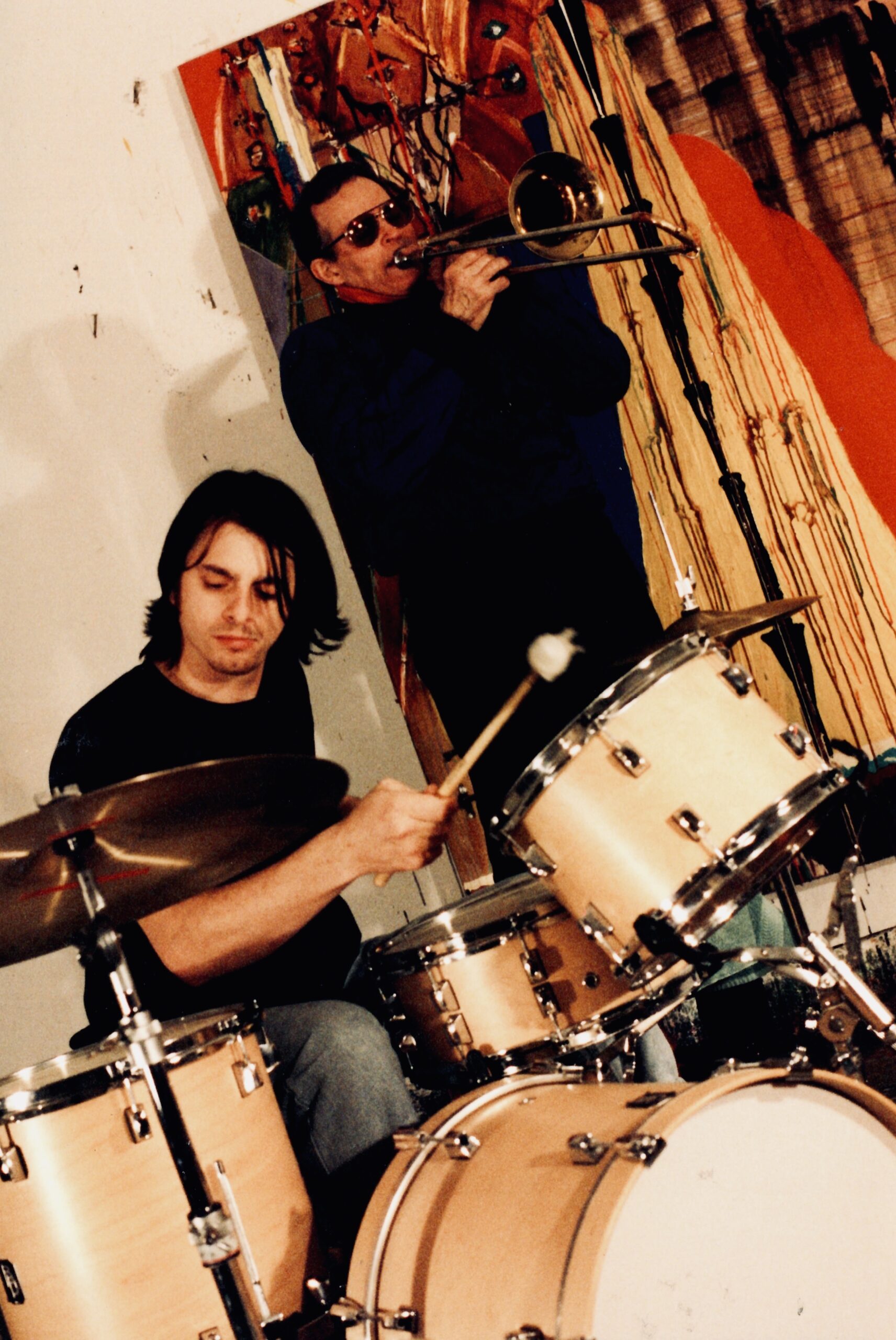
John Dierker and Jeff Arnal
(2000) ‘Red Room’ – Generate Records
John Dierker and I started making music together in 1994. John is a great friend and lifelong musical mentor. We both have eclectic taste in music and have played in so many different groups together. John is a powerhouse! He mostly plays bass clarinet and tenor saxophone. During the 1990s we toured as a duo and this is a live recording from a concert at the Redroom in Baltimore, MD in 1999. We are slowly working on a new duo EP.
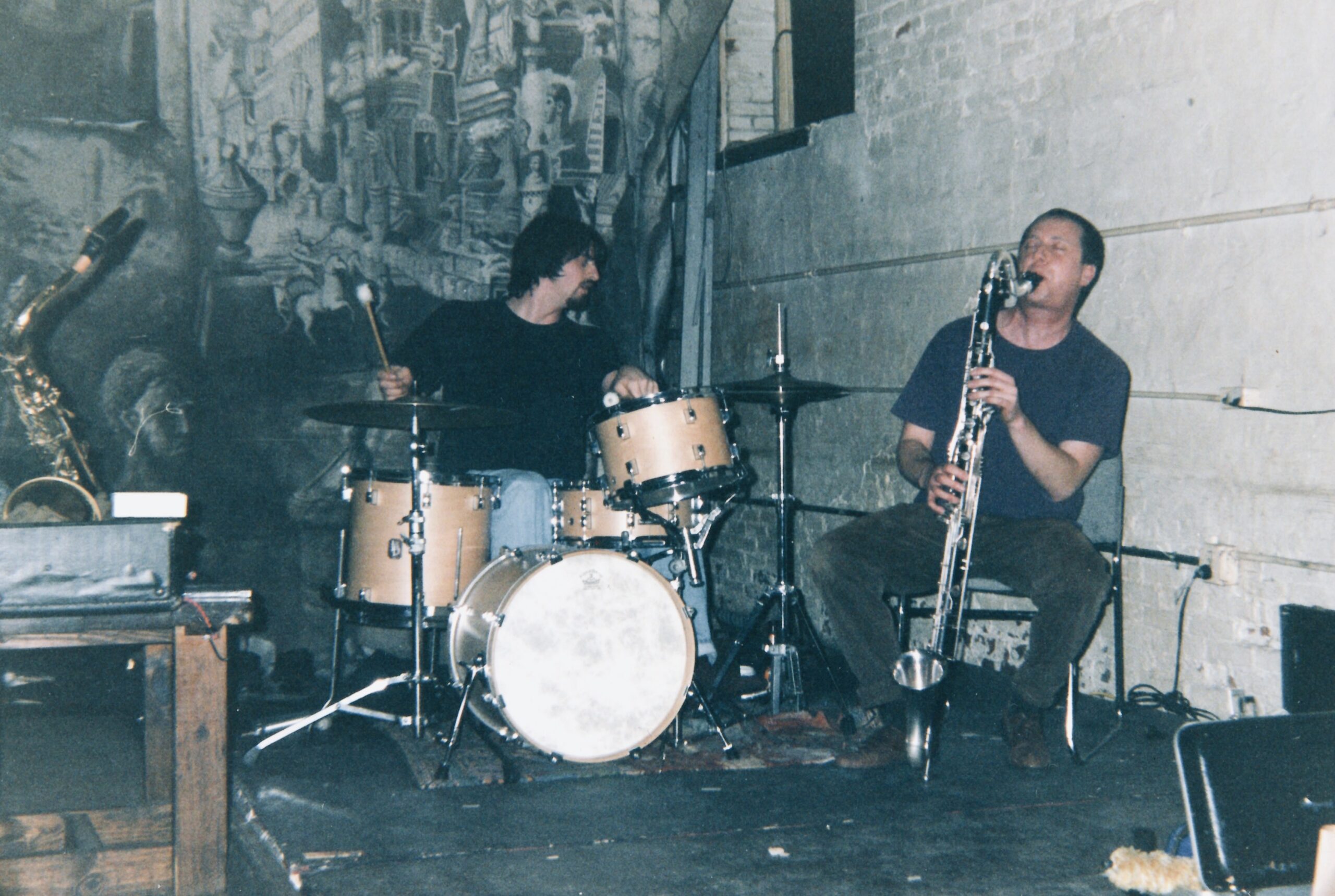
Spy Satellite (John Dierker, Jonathan Vincent, John Hughes, Jeff Arnal)
(2001) ‘Spy Satellite’ – Generate Records
This group has history… we started rehearsing, recording and playing gigs around Baltimore in 1994. The group grew out Stuart Sanders Smith’s new music ensemble - Dierker on reeds, Jonathan on piano, Hughes on bass and myself on drums were the core group but we often had friends sit in like Mike Cerri on trumpet or Eric Meyers on guitar. Spy Satellite was a real rehearsal group – a musical laboratory. Sometimes we would work through noise or sound pieces or compositions or dedicate months to jazz standards. Experimental music is often presented in backrooms, coffee houses, and bookshops. We had a steady gig in the mid 90s in the backroom of an active stripclub in Baltimore. We thought it was a crazy thing so we would invite all of our friends to show up for this “serious” music gig at the club. I’m guessing this could only happen in Baltimore. We also played our first gig in NY together at the Knitting Factory in 1997 – we were over the moon! John Hughes moved to Germany in 1998 where he is an active musician and organizer.
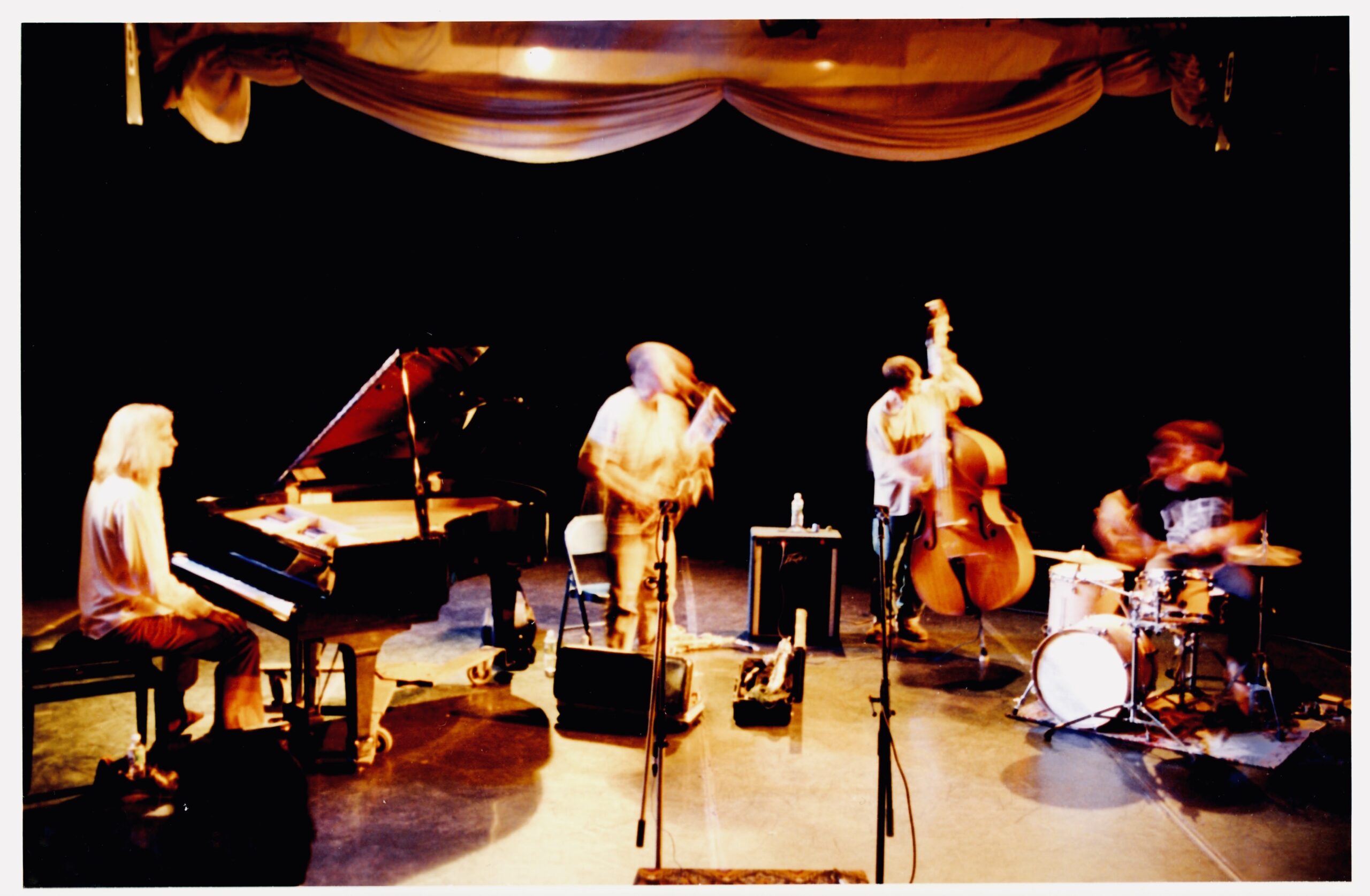
Expositions of Freedom… Now! (Blaise Siwula, Vattel Cherry, Jeff Arnal)
(2001) ‘Badlands’ – Cadence Jazz
This group has classic free jazz energy. Blaise plays saxophones and Vattel Cherry plays bass. I had previously played with Vattel in Baltimore and knew Blaise through his concert series at ABC No Rio. Vattel and Blaise played with everyone under the sun in NY including in Cecil Taylor’s big band. Vattel also played with Charles Gayle in the 1990s. This recording was released on Cadence Jazz Records.
Gordon Beeferman and Jeff Arnal
(2001) ‘Bodies of Water’ – Generate Records
(2006) ‘Rogue States’ – Generate Records
Gordon and I met through our mutual friend Katt Hernandez. Gordon was one of my closest friends and collaborators when we moved to Brooklyn in 2000. He’s like a brother. Gordon has incredible technique and endless musical ideas. We are both melodic players so it was nice to construct beautiful pieces together. Gordon is also a master orchestrator so his color and harmonies were always incredible. We collaborated, recorded, and performed frequently in the 2000s. Another one of our main outputs was rehearsing and performing with Estelle Woodward’s dance projects.
Tripwire (Lars Scherzberg, John Hughes, Jeff Arnal)
(2001) ‘Top Floor Encounter’ – Oaksmus
(2002) ‘Tripwire’ – Generate Records
(2006) ‘Looking in My Ear’ – Creative Sources
The bassist John Hughes organized some concerts in Berlin and Hamburg for this trio in 2000. Adding Lars Scherzberg to the mix and John’s new lowercase approach defined our sound. ‘Tripwire’ did a bunch of touring in Europe and in the states throughout the 2000s. We ended up releasing three records. Top floor encounter was our first concert together and was released by the pianist/composer Dietrich Eichmann. Alberto Braida (piano), Dietrich Eichmann (piano) and Giancarlo Locatelli (bass clarinet) appear on the second ‘Tripwire’ record. I thought ‘Looking in My Ear’ on Creative Sources was a solid record and a great culmination of our work together.
Dan De Chellis and Jeff Arnal
(2001) ‘The Dirigibles Between Similarities’ – Sachimay Records
Dan and I played as a duo for several years in the early 2000s. We played at the Big Sur Experimental Music festival and a few gigs at CBGBs and the Knitting Factory. Dan helped organize the first year of the Improvised and Otherwise Festival in Brooklyn with me, Estelle and Chris Forsyth. He came out of the New England conservatory so he is classical trained but our music leaned closer to free jazz.
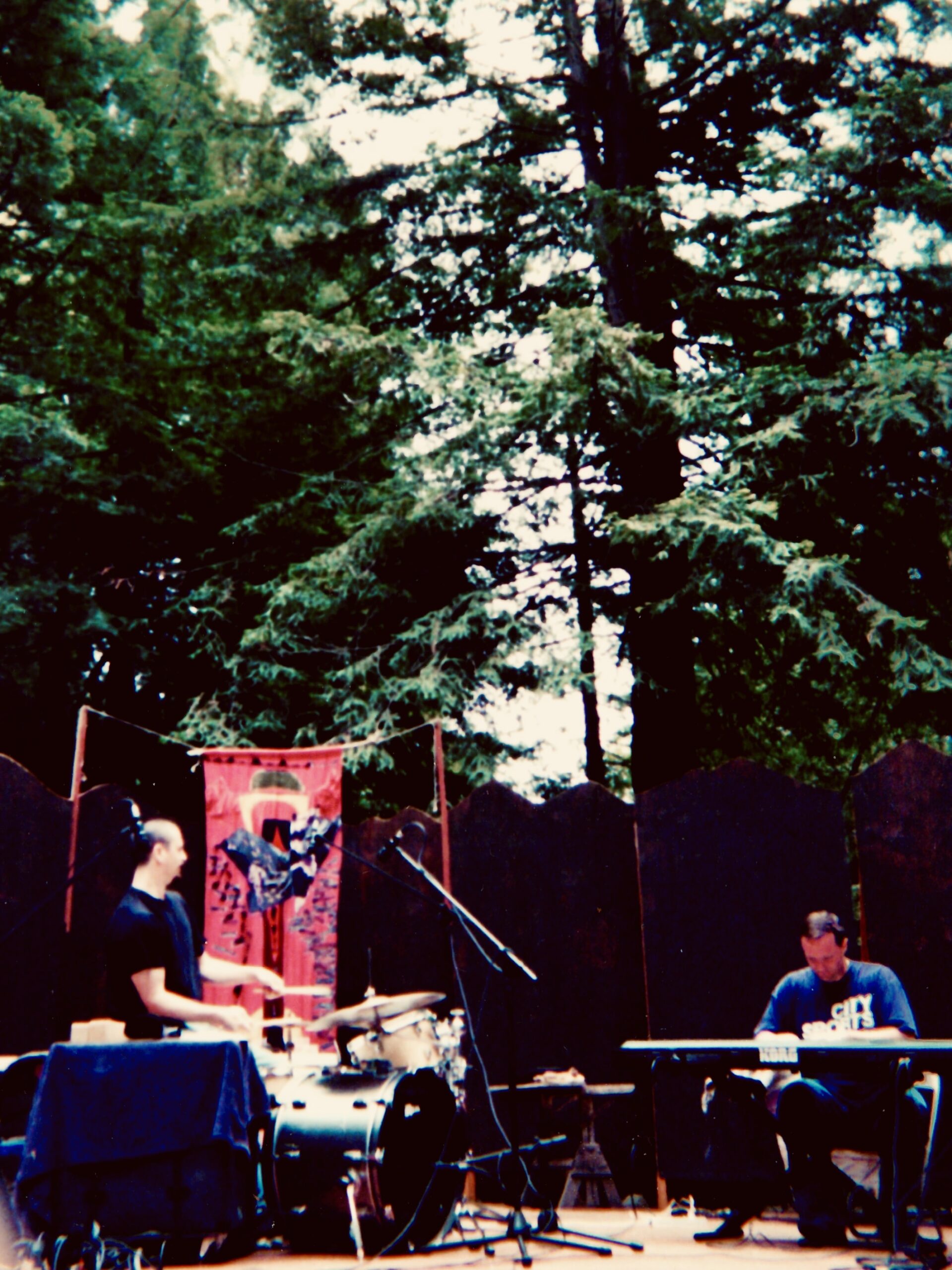
Rev. 99 (99 Hooker, Akio Mokuno, Jeff Arnal Chris Forsyth, Donald Miller, Ernesto Diaz-Infante, RotcodZzaj, Ross Bonadonna, Jody Kurash, Bob Marsh)
(2002) ‘Everything Changed After 7-11’ – Pax Records
This project grew out of a trip to the Big Sur Experimental Music festival in the summer of 2001. This was an incredible festival organized by Ernesto Diaz-Infante. A bunch of friends from New York and the west coast played at the festival and then played on this record. 99 Hooker conceived and organized this project and it was released on Ernesto’s Pax Label.
Dietrich Eichmann and Jeff Arnal
(2004) ‘The Temperature Dropped Again’ – Leo Records
(2007) ‘Live in Hamburg’ – Editions Broken Research
Dietrich and I met in Berlin in 2000 and we had our first recording session in NY in 2002. Dietrich is based in Berlin and we’ve toured Europe several times. Dietrich has an extensive background as a composer. Eichmann studied with Alexander von Schlippenbach (piano) and Wolfgang Rihm (composition). He has written pieces for the SWR Symphony Orchestra, the Lyon Opéra Ballet as well as a concerto for saxophonist Peter Brötzmann and the Ensemble Modern. We are both interested in slow development of density and timbre. The ‘Live in Hamburg’ record is one of my favorite records in my discography. It’s difficult to capture those transcendental moments but this recording was close.
Jeff Arnal, Chris Dahlgren, Seth Misterka
(2004) ‘Red’ – Generate Records
We released this limited-edition mini Cd with hand painted covers. Of course, in 2022 that translates to no one in the world has heard this music. Seth Misterka and I became close friends and collaborators in the 2000s. Seth plays the alto saxophone as well as the guitar in other projects and on his own label – Newsonic (*check out the Misterka Clones)! Seth studied with Anthony Braxton and was a member of several Braxton bands. Same with Chis Dahlgren – he was also very involved with Braxton. This release is one 15-minute track that is a musical journey. Seth is also a very talented audio engineer so thanks to Seth everything from this period sounded good. I think this group only played one gig but it was a blast! Chris uses an amazing distortion pedal on his double bass!
Ryan Smith and Jeff Arnal
(2004) ‘Mogami’ – Public Eyesore
Ryan Smith and I met at Art Omi International Art Center at a composer residency in West Ghent, NY. I was experimenting with amplified percussion. Mostly amplifying the smallest of surface sounds on drums, cymbals and bells. Ryan was using a computer to capture these sounds in real time, process the sounds and send them out to the PA speakers. I would then respond as a sort of feedback loop. The whole project was like a giant extension of a percussion ensemble. We were thrilled that Bryan Day at Public Eyesore released the recordings.
Rara Avis with Gordon Beeferman, Seth Misterka, Jeff Arnal
(2004) ‘Rara Avis’ – Generate Records
Gordon and I invited Seth Misterka to join us for several projects where we were creating music for dance. Up until this point Gordon mostly played acoustic pianos. He was interested in exploring synthesizers so when we were planning the ‘Rara Avis’ CD Gordon decided to include the synth. It really defined our sound and direction. Seth was involved in organizing a bunch of indie music concerts in Brooklyn so we played a few fantastic underground gigs as ‘Rara Avis’ and we had a wonderful concert at Roulette when they were in lower Manhattan.
Transit with Jeff Arnal, Seth Misterka, Reuben Radding, Nate Wooley
(2006) ‘Transit’ – Clean Feed
(2009) ‘Quadrologues’ – Clean Feed
This was one of those rare groups – Transit just clicked from our very first gig. Classic instrumentation with alto saxophone, trumpet, double bass and drums. The group had a collective approach. Everyone was insanely busy so ‘Transit’ only played live a few times, mostly at Freddy’s Backroom. Even years later lots of folks ask about this group. It really had an impact and I think in some part it’s because the recordings were both released by the jazz label Clean Feed. I am so grateful that Clean Feed was interested in supporting this music. In some ways ‘Transit’ was like a classic free jazz group like Old and New dreams with the addition of a contemporary classical approach. Seth, Nate and Reuben are all phenomenal players. I sent the first tape to Clean Feed and they loved it! A few years later they asked for a follow up recording. Who does that? I thought that was incredible – maybe it’s time for a third recording?
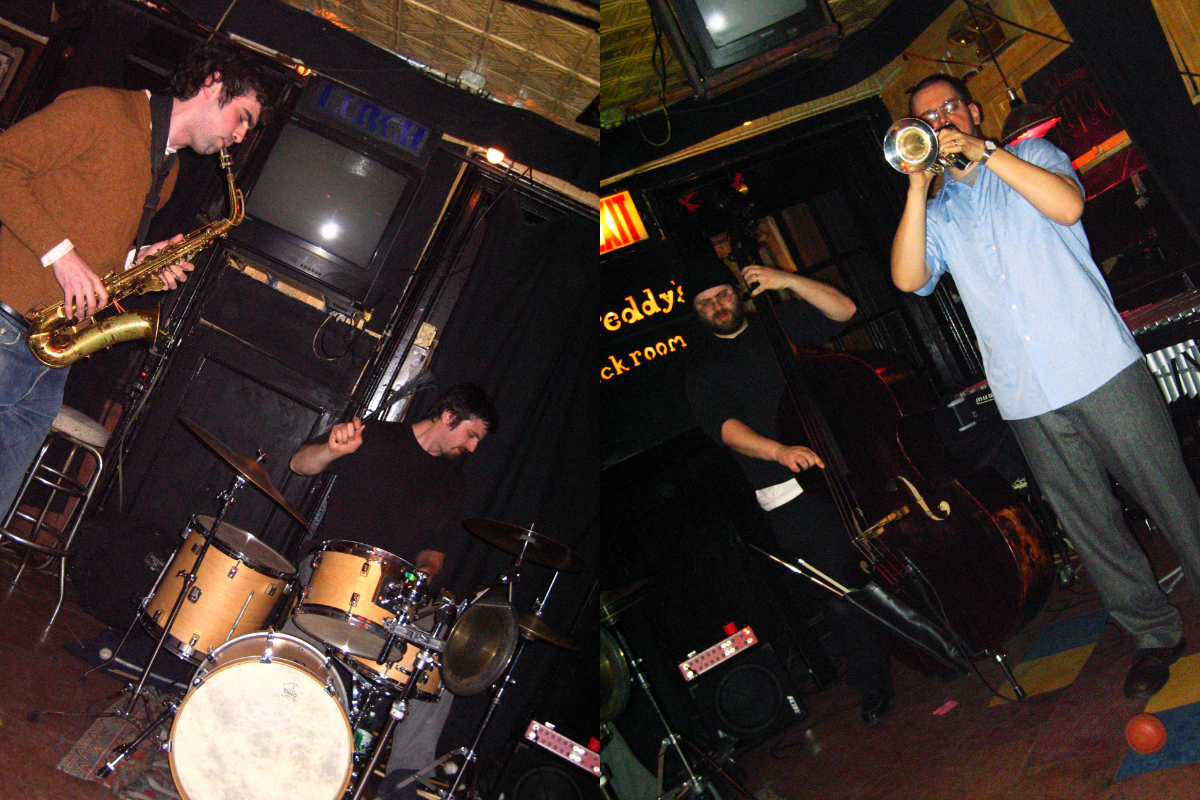
MEJA with Michael Evans and Jeff Arnal
(2006) ‘MEJA’ – C3R Records
We lost Michael Evans last year and I miss him every day. For years Michael and I would get together to practice drumming together. Most drummers are crazy about drum stuff but Michael was on another level. I met my match and my musical brother. Michael had a studio in Brooklyn full of drums, cymbals, gongs and mallet instruments. We would work on anything and everything together from snare drum rudiments, jazz charts, John Bonham licks and insane improv sessions. When I had kids Michael would bring my family food and join me for daily walks with my older son Thomas. Michael was so dedicated to ‘MEJA.’ He organized the recording and several tours. We played on WFMU and had a wonderful gig at the Issue Project Room. Michael was one of a kind! We dedicated the ‘Drum Major Instinct’ CD to Michael.
Aaron Dugan and Jeff Arnal
(2009) ‘Dog Day’ – C3R Records
Aaron is a phenomenal guitarist and great friend. We’ve played off and on for years as a duo and in lots of different projects leading up to this record. We made this recording in Dugan’s hometown of Philadelphia. ‘Dog Day’ received a lot of good press and we toured to support the record. The CD release was at the great Zebulon club in Williamsburg, Brooklyn. Dugan and I have been slowly working on another record.
Ninni Morgia Control Unit (NinniMorgia, Daniel Carter, Jeff Arnal)
(2009) ‘Ninni Morgia Control Unit’ – Ultramarine
This is one of the only projects where I wasn’t close friends with the person I recorded with. I only met Ninni a few times but enjoyed his playing very much. Daniel Carter also plays on this record. Daniel is one of my heroes. He and I have played a few times over the years but I have seen him play hundreds of times. His band Test with Sabir Mateen, Matt Heyner, and Tom Bruno is one of my favorite groups.
Ernesto Diaz – Infante and Jeff Arnal
(2009) ‘Brooklyn Mantra’ – Generate Records
Ernesto and I met in the 1990s and usually played when he visited NY. I was planning a 10-year celebration for Generate Records and we decided to release three 7-inch records for the occasion – one by Gordan Beeferman’s Imaginary Band, one by drummer Matt Schutz’s trio Aperiodic and one from Ernesto and myself. Ernesto was playing mantra strumming on a 12-string acoustic guitar at the time. Ernesto’s playing is absolutely beautiful!
Silver Ash with Aaron Dugan, Casey Block, Jeff Arnal
(2011) ‘Silver Ash’ – Generate Records
Here is another one with Aaron Dugan. Casey Block plays synth on the recording. Silver Ash is a 7-inch with two tracks. We were interested in exploring slow repetitive rhythms sort of in the universe of progressive rock or west African drumming. For the record we mixed in lots of additional percussion parts. Casey has an amazing solo at the end of ‘Lifeboat.’
Here’s an outtake from that record:
Dietrich Eichmann, John Hughes, Astrid Weins, Jeff Arnal
(2012) ‘Pail Bug’ – Generate Records
The stars aligned for this recording – everything clicked. We all were interested in extended techniques within microscopic sound worlds / textures and insanely complicated rhythms. Hughes and I have been playing since our days in Baltimore and Dietrich and I had toured Europe a few times since 2002. Astrid had been a close collaborator with the titan bassist Peter Kowald. Dietrich Eichmann plays piano, John Hughes and Astrid Weins play bass and I am on percussion. Hughes and Weins sound incredible together! Eichmann was brilliant. It turns out this was the last record that I made before a long 10-year break from gigs and records. I didn’t plan the pause. It just happened and ended up being a really beautiful time in my life. I continued drumming on my own and working as a basement scientist.
The New Monuments (Ben Hall, Don Dietrich, Camille Dietrich, Tony Gordon, Jeff Arnal)
(2022) ‘Language Is The Skin’ – Torn Light Records
Ben Hall is an amazing drummer, visual artist and human being. I met Ben when John Dierker and I played Detroit in 1999. Ben also studied with Milford Graves and I am so grateful that Ben released the recording ‘Live in Hamburg’ with Dietrich Eichmann on his label Edition Broken research. Ben asked me to play on this track. I’ve seen Don Dietrich with Borbetomagus many times over the years and played some music with Donald Miller (also in Borbetomagus). I loved the sonic and endurance challenge of this piece. It was like running a marathon with sophisticated giants.
Curt, please tell us more about your art, how do you usually approach it?
Curt Cloninger: In many ways, I approach it like lab research for the media theory I write. I will get curious about topics, or claims other theorists are making, and I’ll want to test the theories by putting them into practice. My art creates systems, and then I will often put my body “in circuit” within these systems, to make my body part of the systems, to have things flowing in and out of my body. That way I’m able to experience the forces flowing through the systems in a bodily way (not just in a removed, intellectual way). So it kind of makes sense that I would wind up gravitating toward modular synthesizers, because modular audio systems make flows very obvious, external, immediate, and tweakable.
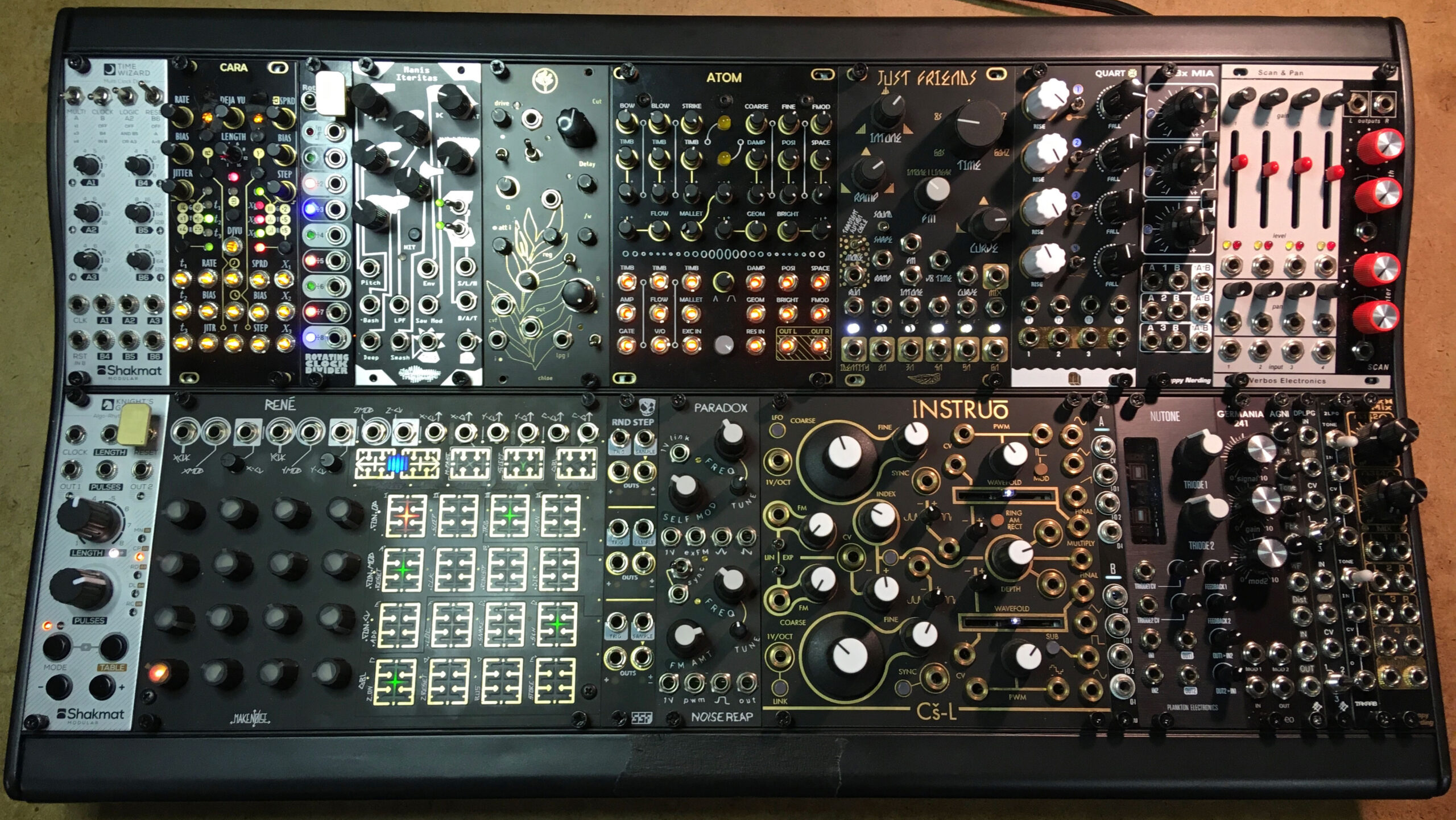
A lot of my art practice is about failure and exhaustion. What will happen if you keep doing something until you run it into the ground? Maybe there is something to be discovered by doing something for 5 hours that you would never have discovered if you stopped after 10 minutes. At what point do systems begin to fail, and is there a more promising range of failure to be discovered? Binary failure (where things simply stop working altogether) is boring. The goal is to create systems that fail in gradual, worthwhile, productive ways.
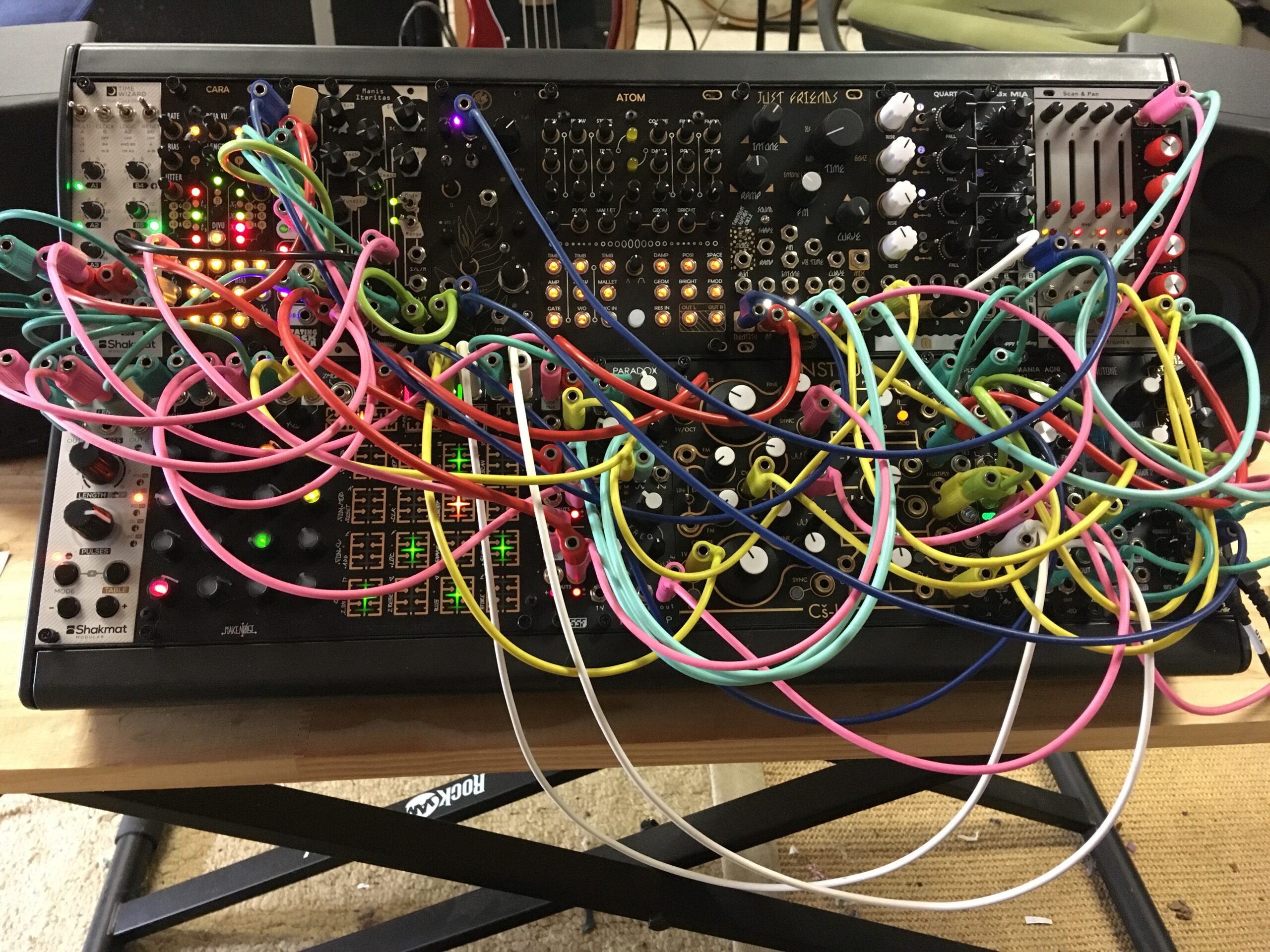
You had exhibitions pretty much around the world, what currently occupies your life and are you preparing something new?
Curt Cloninger: My studio art practice has really turned into a studio music practice for this season of my life. I’m gradually researching and writing a book called “Becoming Whatever: Modulating Signals; Modulating Bodies.” So, all of the modular synthesis experimentation folds into that research. I have a Rhodes electric piano, a pump organ, a drum set, bass, guitar, and all sorts of guitar pedals; but the modular system is currently the most exciting “instrument.”
I have recently been making electromagnetic field recordings and running them through a “dirty reverb” pedal called the Holy Island Audio Tides. The results are technically noise, but very pretty noise. My next solo audio project might be a sequence of instrumental pieces: a modular piece, then an EMF field recording piece, then a guitar + pedals piece, then another EMF piece, et cetera. But we’ll see where all that leads.
I continue to collaborate with an international spoken audio group called “utterings” (link). We keep waiting for the project to exhaust itself, but it hasn’t happened yet!
You recently released your fifth book, Some Ways of Making Nothing: Apophatic Apparatuses in Contemporary Art, would love it if you can share some further words about it.
Here is the official blurb: What if all works of art were better understood as functioning apparatuses, entangling their human audiences in experiences of becoming? What if certain works of art were even able to throw the brakes on becoming altogether, making nothings rather than somethings? What would be the ethical value of making nothing, of stalling becoming; and how might such nothings even be made?
Curt Cloninger: Some Ways of Making Nothing: Apophatic Apparatuses in Contemporary Art borrows its understanding of apparatuses from quantum mechanics and the process philosophy of Alfred North Whitehead, and its understanding of nothing from apophatic (negative) theology. It then proposes a new way of understanding art, applying this understanding to artworks by Arakawa and Gins, Robert Fludd, David Crawford, Joshua Citarella, William Pope.L, and Haim Steinbach. Philosophy, physics, theology, and media theory are traversed and involved in order to understand art differently so that it might be made to matter more.
The book is here!
It’s mostly an art theory book, but it draws on philosophy, theology, and physics. It arose out of my art practice of exhaustion and failure.
[Both] What are some of the most important players that influenced your own style and what in particular did they employ in their playing that you liked?
Curt Cloninger: I don’t really like synth-specific music genres, so I don’t really have a modular synth player whom I admire. I admire several modular synth builders, particularly Jason Lim of Instruo and Tony Rolando of Make Noise. The harmonic logic of the Make Noise Rene sequencer and the entangled tones of the Instruo Cs-L dual oscillator heavily influence the way I compose on and play my system. I love Kevin Shields (My Bloody Valentine) as a guitar player and producer. He does beautiful distortion so well. Distorted tones don’t have to be aggressive; they can be gorgeous and precious. John Cage’s approach to randomness and aleatory inform how I patch my modular system. Randomness can be composed, so to speak. It doesn’t have to be let loose to run totally wild. You can decide how much to let into your system, what flavors to let in where, how frequently to let it in, how it moves around your system, and then of course you can meta-randomize all these decisions. Randomness within randomness. It becomes less like creating a single static composition and more like dialing in a sweet spot, a range of outputs that you want.
Jeff Arnal: This morning I’ve been listening to Ornette Coleman with Ed Blackwell, Don Cherry, Charlie Haden. I love, love, love Ed Blackwell’s drumming. ‘Mu’ with Don Cherry and Ed Blackwell is an all-time favorite. I can listen to Blackwell every single day. I love how his drumming breathes. His feel is perfect. I’ve been preparing for a Morton Feldman listening session at our museum. We are hosting a performance of Morton Feldmans’ Piano and String quartet. The pacing and reflective nature of the work is otherworldly. It somehow reminds me about the best parts of life and gives me hope. Also any day with Henry Threadgill is a good day. I’ve been listening to Air recordings for decades and continue to learn from this band.
How did you two know each other and what led to ‘Drum Major Instinct’?
Curt Cloninger: Jeff is the Executive Director of the Black Mountain College Museum and Arts Center here in Asheville, and I am on its board of directors, so we met in the context of this very unique art museum. During COVID, I sent Jeff some lo-fi videos of modular patches, just short sound sketch experiments. We must have been talking about music. I’m not sure what led me to send those. He asked me to send more high res versions, and then he added drums to them. The first piece he sent back turned out to be ‘Walking In Rotterdam,’ the first track on the CD. When I got it back, it blew my mind. I had a certain sort of basic rhythm in my head when I made the patch, and Jeff locked into a completely different rhythm, much more complex and syncopated. It was like he found a completely different song within the song (or made a completely different song out of the song). So we just kept going with it.
Did you have a specific concept in mind when starting the project and to what degree do you think you succeeded?
Curt Cloninger: We wanted to be able to play live where we improvised off of each other (instead of just swapping files), and we were able to do that. So to me, that was a success. If we keep going and we begin repeating ourselves and making songs that sound exactly like prior songs, then I suppose we should stop. But so far that hasn’t happened.
It’s unusual to have drums and synths together in a duo…
Curt Cloninger: Yes. My modular system has rhythmic elements, but it doesn’t have many standard “percussion” elements. There are a few, but I don’t use them in a standard way. So there is space for percussion. My system isn’t all that large, but it is polyphonic and stereo, so it sounds more like three or four different instruments than a single monophonic instrument. I tune it to itself, but not to any standard tuning. So it’s easier to collaborate with a drummer than it would be with other melodic instruments.
Please share some further words of what the recording session for the three pieces looked like.
Curt Cloninger: For ‘Walking in Rotterdam,’ I emailed a stereo audio file to Jeff. It was one patch, one take, but doubled. I recorded it simultaneously into a 4-track tape and into Pro Tools (Digital Audio Workstation). The tape recorder rolls off treble and makes things sound more low fi. Then I put the 4-track recording into Pro Tools. Because the tape recorder is mechanical, it doesn’t record or play back at the same speed as Pro Tools. So it was the same take twice, but in and out of sync. I think I tried to line both versions up perfectly and failed, but I liked the wobbling, so I kept it. Then Jeff played a rhythm that was not in my mind at all when I recorded my part. Then we added a looped field recording I had made of me literally walking in Rotterdam.
For ‘Modulating Bodies,’ we recorded 3 different performances live together in the studio. Each performance was like 10-20 minutes. I used the same source patch for each performance, but tweaked it and re-patched it a bit between each one. But all the patches were all in the same basic key. Then Jeff went back through afterwards, like TeoMacero on ‘Bitches Brew,’ and pulled out the best parts from all 3 takes. He rearranged them in an order that progressed better, and that became the song. He actually did more than just that, because sometimes he faded the drums out and left the synth, and other times he did the opposite. The final composite wound up being much better than any of the three performances.
‘Live at Citizen Vinyl’ was the second set of a two-set gig. It was the first (and only time) we have played live. For me, I tweaked my modular patch a bit between sets; but not too much, because I didn’t want to lose what I had already patched. I think we were listening to each other and playing off of each other more intently during the second set, and it turned out to be the more engaging of the two.
Are you planning to do some more stuff together?
Curt Cloninger: I would like to. I am still learning my system, and I’m always patching. I don’t feel like we’ve exhausted our collaboration yet, and I am one to work until a direction is fully exhausted. So, for me, I am still very curious to see where things might lead.
Thank you for taking your time. Last word is yours.
Curt Cloninger: Jeff rocks! I have a drum set and am always improving, but I could play for a thousand years and not wind up where Jeff already is. His drumming is as much about texture and tone as it is about rhythm. Having collaborated with Jeff makes me approach my own hobbyist drumming differently. Time is more malleable than I originally thought it was!
Jeff Arnal: Working with Curt has been completely rewarding and challenging. I really don’t understand how the modular synth works but what comes out from Curt is music to my ears. It’s completely fresh! It feels like we are just scratching the surface so I’m sure there is more to come. It’s refreshing to get to know Curt and his artistic practice and personal philosophies. Completely inspiring – I’m so happy we are making music together!
Thanks, Klemen, for spending time with us. We enjoyed the interview and we really appreciate what you do and your interest in ‘Drum Major Instinct’!
Klemen Breznikar
Curt Cloninger lab404 / playdamage / deepyoung
Generate Records Official Website
Mahakala Music Instinct Official Website / Facebook / Instagram / Twitter / Bandcamp

